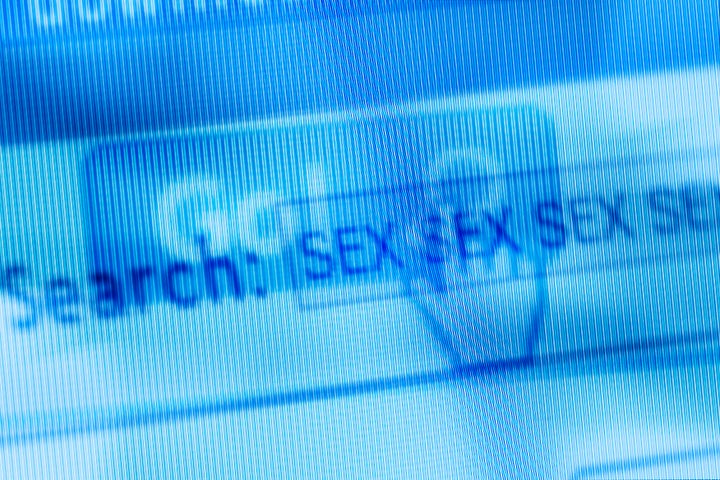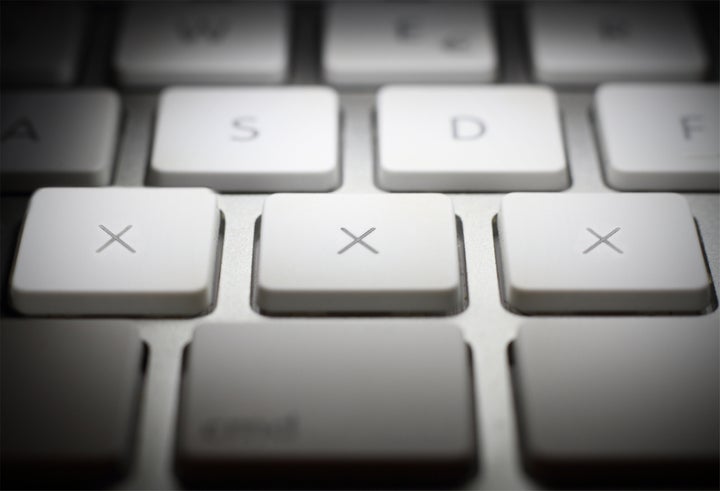Actress Jada Pinkett Smith recently revealed she’s struggled with “an unhealthy relationship” to porn in her past.
On Monday’s episode of her Facebook Watch series “Red Table Talk,” Pinkett Smith said she had a “little porn addiction” back in the day but later clarified: “I actually feel like I was using ‘addiction’ a little lightly. And maybe I’ll say now that I had an unhealthy relationship to porn at one point in my life where I was trying to practice abstinence.”
In the episode, Pinkett Smith said she was using pornography to fill an emotional void.
“It was actually like filling an emptiness, at least you think it is,” she explained during the conversation with her mother, Adrienne Banfield-Jones, and daughter, Willow Smith. “But it’s actually not.”
In a world of smartphones, tablets and laptops, X-rated content is now more accessible than ever. While many people are able to enjoy porn in healthy ways, for others, it can become an unhealthy obsession that leads to a host of issues.
We talked to experts to find out if compulsive porn use can be classified as a true addiction, and how to spot the signs that porn use has veered into potentially harmful territory.
Porn addiction is not a diagnosable disorder — at least not yet.
In the mental health community, there’s been some debate about whether compulsive pornography use should actually be considered an addiction, and in turn, how it should be treated.
Neither porn addiction — nor the more general sex addiction — appear in the most recent edition of the Diagnostic and Statistical Manual of Mental Disorders (DSM-5), the handbook health care professionals use to classify and diagnose mental health conditions. While there was some discussion about adding “hypersexual disorder,” which would include compulsive pornography use, to the DSM-5, ultimately the proposal was rejected because of a lack of conclusive research.
In 2018, compulsive sexual behavior disorder was added as an impulse control disorder (not an addiction disorder) in the World Health Organization’s International Classification of Diseases (ICD-11). Some experts say compulsive pornography use could be manifestation of CSBD, a disorder characterized by “a persistent pattern of failure to control intense, repetitive sexual impulses or urges resulting in repetitive sexual behavior.” But a specific addiction to porn is not a clinical diagnosis as of yet, according to mental health professionals.
“Sex and porn addiction are terms that have been handed down to us over the years and may speak to how someone feels about their relationship with porn, but they’re not diagnostically useful categories in my opinion,” sex therapist and author Ian Kerner told HuffPost.
Interestingly, gambling addiction, which was previously listed as an impulse control disorder in the DSM, is now considered an addictive disorder, along with substance use disorders like alcoholism and substance abuse.
“A substantial number of individuals spend excessive amount of time viewing pornography. While this alone doesn’t make it a mental health disorder, when they pursue pornography despite risks of emotional harm to self or others, experience significant adverse consequences ― like termination from work ― and feel unable to reduce or stop this behavior, it starts to look a lot like other mental health problems such as gambling disorder,” said Rory Reid, an assistant professor of psychiatry at the University of California, Los Angeles.

A small 2014 study out of the University of Cambridge found that for people with compulsive sexual behavior, watching porn triggered brain activity that mirrored what occurs in a person with a drug addiction’s brain when they’re shown their drug of choice.
However, while interesting, these findings “could not be used to diagnose” compulsive sexual behavior, the researchers noted. “Nor does our research necessarily provide evidence that these individuals are addicted to porn — or that porn is inherently addictive,” researcher Valerie Voon said.
“This occurs with images of cigarettes in smokers and images of gaming in gamblers, amongst others,” the study’s lead author Nicole Prause previously told HuffPost. “The fact that this looks the opposite in those who report problems managing their porn viewing habits makes it different from every other claimed addiction.”
But this doesn’t mean people don’t struggle with their porn consumption.
While compulsive porn use may not be a diagnosable addiction by the DSM’s standards, there’s no doubt that for some, it’s a real issue with potentially serious and negative consequences. But how do you know when porn use has crossed the line into potentially unhealthy territory?
“When people consume pornography at the expense of personal relationships, risk of being terminated in the workplace, to the point where it negatively impacts their ability to engage in sex with partners, or as a way of dealing with problems such as loneliness, I think these are signs the behavior has ventured into unhealthy territory,” Reid said.

Other signs of dysfunction may include extreme secrecy and shame around the porn habit and many unsuccessful bids at curbing their usage, added Chris Kingman, a psychotherapist who specializes in treating people with troublesome porn use.
“Once a person feels shame about their porn use, and feels the needs to hide it, there’s a problem,” he said. “Privacy can be a very healthy dimension of life, but shame is about secrecy and hiding important aspects of one’s self.”
And if you’re using porn as a way to regulate your emotions, rather than seeing it for what it is ― a form of entertainment ― it could be an indication that there’s a problem, said psychologist and sex therapist Shannon Chavez.
“It takes over the experience of self-pleasure as a form of fun and pleasure and makes it a necessity in order to feel comfortable,” she said. “It can also lead to isolation and difficulty connecting with others. People can develop social anxiety, problems with intimacy, and unrealistic expectations around sex and relationships. Excessive porn use can interfere with sexual functioning and desire.”
It’s important to note that sometimes a person’s upbringing or belief system can skew their perception of how much porn consumption is OK or “normal,” thus making even non-compulsive use feel shameful or distressing.
“When it comes to porn, patients are often anxious about their use, shameful or are seeing their behaviors through a value-based lens, like a religion they have grown up with or their partner’s attitudes about porn,” Kerner said. “Shame and anxiety are powerful amplifiers of one’s subjective experience of their behaviors and I try to vacate the shame.”
Fortunately, treatment options do exist.
Because of the diverging opinions on how to label excessive porn use, there are also a number of different treatment approaches out there, including individual therapy, couples therapy, group therapy, 12-step programs and inpatient programs or rehabs.
A mental health professional can help address unhealthy porn habits and help you find new coping mechanisms to regulate stress or difficult emotions, Chavez said.
“I help clients develop healthy dependencies on other sources including relationships and real lived experiences,” she said.
According to Kerner, generally, a problematic relationship with porn can be a symptom of another issue such as depression, anxiety, a mood disorder or an erotic conflict — in other words, a repressed part of a person’s sexual identity or desires.
“I always look to work with the underlying problem, but then also put a patient on a behavioral program to better manage and moderate their porn use if it’s appropriate,” Kerner said.
Kingman emphasized the importance of building or rebuilding a healthy relationship with your sexual self, which for his clients, may mean cutting back on porn or eliminating it entirely. He added that even opening up to friends and family about your struggles or connecting with a support group online can be healing.
“Start talking to friends about it, and you’ll find out that others also have stories about themselves or loved one regarding problematic porn use as it is a very common human dilemma,” he said.
Sex Ed for Grown-Ups is a series tackling everything you didn’t learn about sex in school — beyond the birds and the bees. Keep checking back for more expert-based articles and personal stories.
Credit: Source link